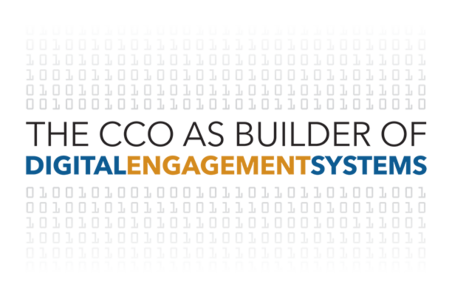- blog
- Communications
Everyone has a friend who is a great gift-giver, and if you ask the secret it's always the same: listening for clues. Whether they realise it or not, people are constantly telling you what they want. You just have to know how to hear what they're saying. That's a powerful piece of advice for communicators.
Our profession is fundamentally about people – understanding how they feel, what they want, where their concerns and interests lie, and adapting the organisation accordingly – and this pursuit is being revolutionised by digital systems and platforms. It's almost counter-intuitive to accept that cold, unfeeling data can help us engage more authentically and effectively with humans. But the evidence is literally all around us.
Data is ubiquitous. We are constantly generating it. Every Tweet or Snap we send, photo or video we share, location we check in to, product we buy or review, website we visit, and online interaction we experience…all of it is a pixel composing the image of what we think and care about.
Marketers segment audiences based on demographic attributes, and tailor strategies based on that knowledge. Today, communicators (and marketers, and others) are capitalising on the power of data to make more meaningful connections based on what they reveal about us. It's like being a master gift-giver at enterprise scale!
In The New CCO: Transforming Enterprises in a Changing World, released in March, the Arthur W. Page Society examined the dramatic changes occurring in the environment in which enterprises now operate, and what those mean for the future of the chief communications officer (CCO) and the communications function in general.
One of the paper's key findings is that CCOs will increasingly become builders of "Digital Engagement Systems" allowing for the management of stakeholder engagement at scale by leveraging insights, derived from data, to engage people as individuals rather than segments.

This week, the Page Society issued The CCO as Builder of Digital Engagement Systems, a follow-up report that explores how we may begin to construct such systems. While it is intended as a starting point from which Page will eventually develop a more definitive framework, the report describes the initial steps that one might take in devising a Digital Engagement System:
A Digital Engagement System is a 21st Century business tool designed to leverage data as an economic asset that creates competitive advantage and business value for the entire organisation. Its potential benefits are many – stronger employee engagement resulting in greater productivity and lower attrition; more targeted media engagement; and an enhanced ability to influence stakeholder advocacy at scale by fostering more meaningful, fruitful relationships.
We are on the cusp of a truly game-changing evolution in how the communications function empirically drives business value, and Digital Engagement Systems will be the engine that drives it. This is the dawn of the digital future of stakeholder engagement, and our work is only beginning.
In the coming weeks we'll be introducing a new podcast series on this topic and sharing new case studies that demonstrate some of the leading efforts and best practices in this area. Stay tuned…there's more to come.
This article originally appeared in Gorkana.